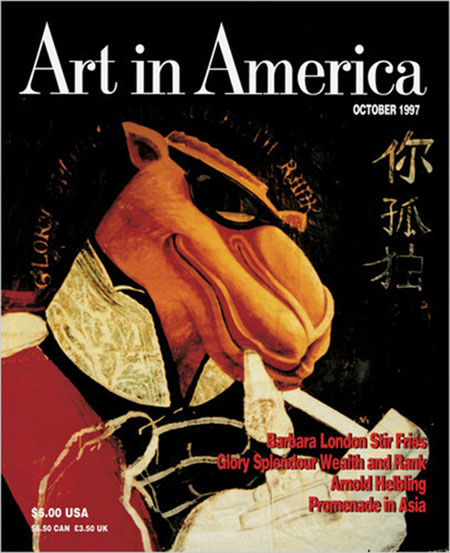In the February issue of e-flux journal, Carol Yinghua Lu discusses the trajectory of the Chinese art world in the past few decades: from an eagerness to imitate Western models and garner international approval, to a turn inward that seeks to development distinctly Chinese forms of art and the art market. She describes this as a process of “de-internationalization”. An excerpt:
The slow rejection of Western influence has grown harder to detect as Chinese participation in the locality that we call the global has increased dramatically. In the 2013 Venice Biennale, more than one hundred exhibitions featuring Chinese artists and curators were organized by Chinese institutions, funders, and artists. More and more galleries from China have taken part in art fairs in such prime locations as London, New York, Basel, Madrid, Singapore, Taipei, and Hong Kong.
Since 2005, when the Chinese government made the decision to participate in the Venice Biennale—but could not fully join due to the SARS outbreak—there has been a conscious effort by the government to promote its brand of contemporary art on the international circuit. Government-supported survey exhibitions of contemporary Chinese art have been and continue to be mounted in museums and temporary venues around the world, none bigger than “China 8,” staged in Germany in the summer of 2015. Eight exhibitions in nine museums across eight German cities opened simultaneously, featuring five hundred works by 120 contemporary artists from China. Codirected by Walter Smerling, director of the Museum Küppersmühle, and Fan Di’an, director of the Central Academy of Fine Arts in Beijing, this event was the biggest state-level exhibition of Chinese art in Germany. The participating artists consisted of both non-official artists and official artists, including the likes of Xu Jiang, the director of the National Art Academy in Hangzhou. This event intended to demonstrate that the Chinese government was and is open-minded enough to endorse and present contemporary art. For the Chinese art community itself the government has proven to be a promising promoter, offering much-needed platforms and opportunities. What is not discussed, however, is how this relationship shapes the direction of artistic practice.
The de-internationalization of the contemporary art world in China is further concealed by the Chinese art system’s ability to continuously adopt terms and references from its Western counterpart while at the same time giving them a Chinese interpretation. In 2001, a new media art department was established in the National Art Academy, with many other art academies subsequently following suit. The artists and teachers who helped push for this change considered it a covert opportunity to generate a more progressive teaching program and to break away from the institution’s conservative and stagnant atmosphere. Privately, this move found its spiritual origin in the radicalism associated with the emergence of new media art in Europe at the end of the 1980s. But publicly, the artists and teachers behind the new department linked it to the society-wide and not-at-all-radical obsession with new technology in China at the time.
Image: Zhou Tiehai, Fake Cover, 1995–98.
